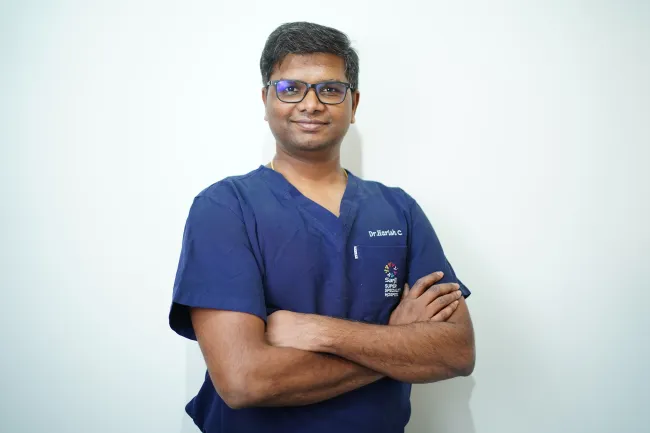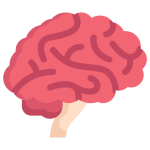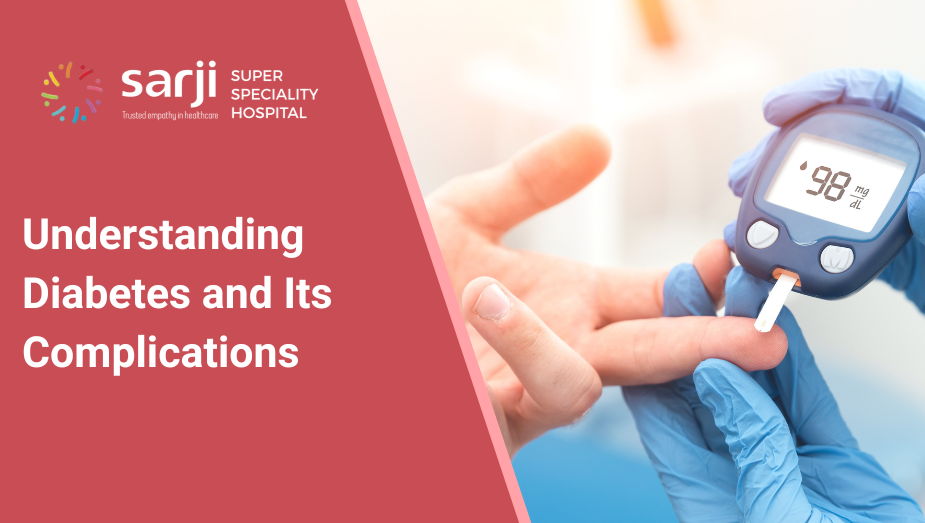Neurosurgery is considered synonymous with brain surgery. Though it has other components to it, brain surgery is probably the most important of it.
Ailments treated:
- Brain tumors
- Traumatic brain injury
- Neurovascular surgery
- Neuralgia and facial pain syndromes
- Endoscopic brain surgery
- Hydrocephalus
- Congenital malformations of brain
- Brain hemorrhage or bleed
- Brain infections
- Epilepsy
- Movement disorders
- Scalp lesions and AVM
- Skull tumors and fractures
- Orbital tumors/ malformation
Brain tumors
Any space occupying lesion in the brain may be called or suspected as a brain tumor. Not all of them are cancerous. There are many types of tumors including benign tumors, infection or abcess, granuloma and malignant/ cancerous tumors and metastases (tumor spread from other organs).
Early diagnosis and treatment of these tumors is key to better recovery and getting back to normal life. Headache is the most common symptom, though not all headache are alarming for tumor workup. Other symptoms may be seizures/fits, vision problems like blurred vision or double vision, weakness of limbs, numbness, persistent vomiting, facial weakness/asymmetry, persistent giddiness, facial pain etc.
Such patients are usually evaluated with imaging of the brain – contrast MRI of the brain and then if required some more test may be done. Most tumors require surgery in the form of biopsy or tumor removal. Tumor removal is curative in many benign and low grade tumors. In case of malignant tumors, surgery helps by reducing tumor burden, reducing pressure in the brain, relieving symptoms and help by reducing the amount of adjuvant therapy required and their side effects.
With advancing technologies, surgery has become safe and faster avoiding or reducing complications. With advanced equipments like microscope, endoscope, Ultrasonic aspirator and neuromonitoring surgery is now safer than ever.
Tumor and cyst surgeries :
- Meningioma
- Glioma
- Abcess
- Cavernoma
- Epidermoid
- Medulloblastoma
- Ependymoma
- Neurocytoma
- Pediatric brain tumors
- Vestibular schwannoma
- Cavernous sinus tumors
- Intraventricular tumors
- Pituitary adenoma
- Skull base tumors
- Choroid plexus tumors
- Intraventricular tumors
- Colloid cyst
- Arachnoid cyst
- Neuroenteric cyst
- Neurocysticercosis and other parasitic cysts
- Embryonal tumors
- Cavernoma
Traumatic brain injury
Injury to head is one of the leading cause of preventable death and suffering especially in young working population. Prevention is the best form of treatment for brain injuries and once injured brain may not fully recover it its pre-injury state.
However, brain injury continues to be a common cause for hospitalization and brain surgery. Most patients are treated by conservative/ medical measures. A subset of patients having severe, life threatening injuries or deformities of skull and face may require surgical treatment.
Patient may have variety of bleed or hemoatoma in the brain, which when becomes large enough to compress brain and cause further damage, may need to be evcauted by opening the skull/ craniotomy. At times, brain may be swollen and just removing the blood clots may not sufficient to reduce the brain pressure, that is when a part of the skull bone is removed (decompressive craniectomy ) to relieve pressure within the brain.
Skull bone fractures poking the brain(depressed fracture) may need surgical removal and when the brain fluid leaks from nose or from the wound through a fracture, same will also require surgery to stop fluid (CSF) leak and prevent infection travelling to the brain (meningitis).
Surgical treatments
- Craniotomy and evacuation of Extradural hematoma (EDH)
- Craniotomy and evacuation of Subdural hematoma (SDH)
- Decompressive craniectomy
- Bifrontal decompressive craniectomy
- Bifrontal craniotomy and anterior cranial fossa repair
- Endoscopic CSF rhinorrhea repair
- Depressed fracture elevation
- Contusectomy, Cisternostomy
- External ventricular drain
- Burrhole and chronic subdural evacuation
Traumatic brain injuries take time to heal and surgery or medications is only one part of the treatment. Recovery from brain injury needs multimodality team approach involving intensive care, emergency physicians, neurosurgeon, plastic surgeon, maxillofacial surgeon, orthopedic surgeon, physiotherapist, vocational rehabilitation, speech therapist, nursing staff and home care nurses.
3.Neurovascular surgery
- Aneurysm is balloon like dilatation of blood vessel. Such aneurysm is brain can rupture and cause life threatening bleed. These can be treated by clipping of aneurysm and stopping blood flow going into the aneurysm. Other alternative is endovascular minimally invasive treatment like coiling.
Cerebral bypass is done when either brain is not getting enough blood supply from the regular blood vessels or a large lesion or aneurysm is involving the blood vessel and risks its injury. Two types of bypass may be done.
Low flow bypass in Moya moya disease/ ischemic conditions.
- Here a scalp blood vessel is joined to brain to give its blood supply. Since scalp arteries are small it gives rise to low flow bypass and may increase gradually over time.
High flow bypass
In this, a large blood vessel like external carotid artery is joined to brain using a graft (EC-IC bypass). This has high flow and gives immediate good blood flow to brain similar to normal circulation.
Indirect revascularization like EDAMS may also be done in Moyamoya disease.
- Arterio-venous malformations are abnormal tuft of blood vessels. These are weak and can rupture and cause bleeding in the brain and sometimes present with seizures or headache. Surgery especially for smaller grade AVM is curative. AVM present in deeper locations and eloquent regions may need multimodality treatment including endovascular embolisation, gamma knife radiotherapy.
- Carotid endarterectomy – When there is a block in large blood vessel supplying the brain from the neck, the cholesterol plaque can be removed to restore blood flow to the brain. This procedure is called carotid endarterectomy. Alternative is to do angioplasty and stenting.
- Neuralgia and facial pain syndromes
Electric shock like pain arising from the nerve is called neuralgia. Trigeminal neuralgia (pain over the face) is one of the commonest. These may be treated with medications as first line. However evaluation for cause and treatment of the underlying cause can be curative. Some patients may have epidermoid cyst – removal of which can relieve neuralgia. Microvascular decompression (MVD) surgery of the nerve when a neurovascular conflict is present can give permanent relief from neuralgic pain.
Common indications for MVD are
- Trigeminal neuralgia
- Hemifacial spasm
- Glossopharyngeal neuralgia
- Nervus intermedius neuralgia
- Endoscopic brain surgery
Many tumors like pituitary tumors, intraventricular tumors and intracerebral bleed can be operated with minimally invasive endoscopic approaches. Endoscopic third ventriculostomy is an excellent alternative to VP shunt in hydrocephalus in selected patients. As technology is improving more and more surgeries are being done with this approach including skull base tumors, aneurysm clipping etc.
- Hydrocephalus
Hydrocephalus refers to abnormal increased accumulation of water in the brain. There can be may causes for this condition. Many children can be born with this problem called congenital hydrocephalus. Others may develop later on secondary to bleed in the brain, infections, tumors etc. Most common form of treatment is to perform a Ventriculo-peritoneal shunt where in excess water (CSF) is diverted into the abdomen/peritoneum and thus relieving brain pressure. Other alternative is ETV is selected candidate. In presence of active infection, alternative temporary procedures like external ventricular drain (EVD) or Ommaya reservoir insertion may be done to but time till CSF clears.
In patients with abdominal surgeries or other problems in abdomen where peritoneal shunt is not possible or not fit, alternatives like ventriculo-pleural or ventriculo-atrial shunt may be required.
- VP shunt
- VPl shunt
- ETV
- VA shunt
- EVD
- Ommaya
Congenital malformations
Congenital malformations of brain are abnormalities present since birth like meningocoele, meningo-encephalocoele, Chiari malformations, congenital hydrocephalus, aqueductal stenosis, arachnoid cysts. These may cause myriad of symptoms in the child and sometimes may present late in adulthood. Many of them require surgical corrections.
Brain hemorrhage
Bleeding or hemorrhage in the brain may be due to variety of reasons. Most common cause being head injury or trauma. Spontaneous bleeding in the brain may be due to sudden rise in BP, vascular abnormalities or tumor bleed.
Patients commonly present with sudden severe headache and vomiting or sudden unconsciousness or seizures or stroke like symptoms.
Small bleeds are managed with medications. Larger bleeds causing increased pressure in the brain and unconsciousness may require surgery.
Surgery may also be required for underlying pathologies like tumors, aneurysm ro AV malformations.
Brain infections
Infection in the brain can present in various forms – meningitis, encephalitis, brain abscess, cerebritis, granuloma etc.
Most are treated by medications. Some may need evaluation by biopsy for confirmation and rare cases may need surgery to remove the abscess or granuloma.
Epilepsy
Epilepsy is neurological disorder with repeated unprovoked seizures. Most patients get good control with medications. When patients are not relieved/controlled of epilepsy even with 2 medications, then it is called drug refractory epilepsy. Such patients may be evaluated further for subtle epileptic focus and surgery may help become curative or reduce frequency/severity of the episodes.
Movement disorders
Movement disorders like Parkinsonism, tremors, dystonia etc may also be treated by procedure like Deep brain stimulation, pallidotomy or other lesioning procedures
Skull tumors
Skull tumors are rare and usually are benign. Benign tumors may need to be resected for either cosmetic reasons or to confirm the pathology. Suspected malignant / invading lesions may need multidisciplinary approach with help of oncosurgeon, plastic surgeon, facial and ENT surgeons
Scalp lesions and AVM
Smaller scalp lesions are usually treated by general or plastic surgeons. Large scalp lesions and Scalp AVM may need to be treated involving neurosurgeons. AVM may also be embolised via percutaneous or endovascular approaches.
Orbital tumors and malformations
Tumors in the orbit/ around the eye may need surgery either directly through orbit or via opening the skull. Some orbital tumors may also have intracranial extension.
Doctors








